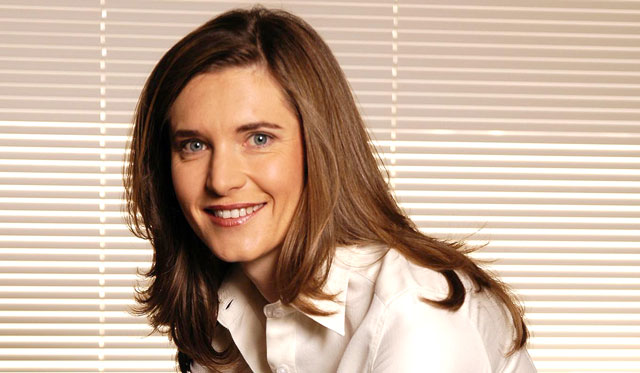
Broadcaster e.tv says the most recent draft digital terrestrial television (DTT) regulations published by the Independent Communications Authority of SA (Icasa) will make it impossible for free-to-air services to compete with DStv and other pay-TV operators.
It says the draft regulations, published in July, unfairly disadvantage e.tv and the SABC while benefiting pay-TV players. The result, it argues, will be “poor television” for “poor people”.
In a presentation to Icasa on Thursday, e.tv argued that the regulations needed to prevent the “ghettoisation” of free-to-air television and bridge the digital divide. They would ultimately determine whether DStv, which is owned by Naspers’s MultiChoice, or free-to-air services became the dominant platform in SA broadcasting.
E.tv says the four-year-long process of developing the regulations has been “arbitrary and lacking in consistency”, has been beholden to the whims, the changing views and composition of the Icasa council, has lacked “policy foundation or economic analysis” of the television market and has been “devoid of any rational justification”.
E.tv says no justification has been given for the proposal that M-Net receives 40% of a second “multiplex” — this is a chunk of radio frequency spectrum — while e.tv receives 50%. It implies this doesn’t make sense given that e.tv has an audience of 8,3m households against the pay channel’s 65 000.
The free-to-air broadcaster has also slammed what it calls Icasa’s disregard for the financial impact on incumbent broadcasters caused by repeated delays in finalising the regulations and newly introduced content quotas.
E.tv chief operating officer Bronwyn Keene-Young says more recent delays can be attributed to the expressions of interest by a potential newcomer, Kagiso Media, in launching television services and its subsequent lobbying of Icasa to adjust the proposed framework.
“Kagiso Media started lobbying in September and Icasa then reduced our capacity [in multiplex two] by 10%,” says Keene-Young. “We made submissions in November and again in March. Icasa then returned our allocation to 50%, but introduced the third multiplex in the process.”
If a third multiplex is created, Icasa should reconsider how spectrum is allocated to allow incumbent broadcasters like e.tv to offer high-definition (HD) channels, she says.
One of the goals of moving to digital is to introduce new players and ensure that free-to-air services remain compelling for consumers. E.tv argues that the digital free-to-air platform has to be at least as attractive as DStv among all audiences — and not only lower-income audiences — if it is to be viable.
It argues, too, that it will be impossible for it to provide HD channels under the proposed licensing framework and that this will put it in a position where it cannot effectively compete with DStv for advertising.
“The problem is Icasa is looking at television as if it’s very static,” Keene-Young says. “If you look at the first 50 years of TV, there weren’t massive developments beyond the introduction of colour and the VCR, but reception equipment and delivery mechanisms are now moving almost as fast as computers.”
She says that within a decade, HD sets will be commonplace in all households, not only wealthier ones.
In order to “level the playing field and create a fair competitive market”, e.tv proposes that during “dual illumination” — when both analogue and digital broadcasts will coexist — the first multiplex be assigned to the SABC and public radio, the second to e.tv and commercial radio, and 25% of the proposed third multiplex going to M-Net, with the balance to be shared among pay-TV licensees.
E.tv has also objected to the draft regulations’ new stipulations around content quotas. The broadcaster contends that in order to comply it would have to broadcast 730 hours of original content in prime time each year.
“It would cost any channel — whether e.tv, the SABC or a new service — a minimum of R100m per annum per channel to comply with this quota in a manner which is cost effective but which also does not affect the audience attractiveness of its service.”
Because pay-TV operators are not subject to these same conditions, and because of the nature of the service — where repeating content is an essential aspect of the business model — e.tv reckons that these requirements will further entrench DStv’s dominance, weakening the prospects of a successful DTT platform and preventing free-to-air players from competing for audiences and advertising.
Like the SABC, e.tv argues that new players should only be introduced after the dual-illumination period is concluded. “The fact of the matter is, DStv is growing so rapidly that, although it’s a pay-TV offering, it is getting to the point where it is realistically impacting on the revenue share of the free-to-air sector,” Keene-Young says.
“Almost 50% of advertising spend goes to DStv,” she says. “If Icasa doesn’t regulate that we’re going to see further fragmentation of the market. If free-to-air is to be competitive against pay TV, we have to have a viable DTT platform. To compete, DTT must have viable HD TV offering.”
She adds that introducing newcomers too early in the switchover to digital could result in a weak platform if all that is offered to consumers is “a fragmented standard-definition platform”.
“We’re not saying ‘protect us from competition’,” Keene-Young says. “To introduce new players with DStv so dominant will sound the death knell to new players. Look at the struggle TopTV has had. If this isn’t taken into account, free-to-air players won’t be able to survive.”
Though Icasa has previously suggested that the SABC and e.tv represent the biggest obstacles to competition in the broadcasting sector, e.tv maintains that DStv’s growing dominance is, in fact, the greatest threat.
The broadcaster says the draft regulations don’t address its concerns, raised previously, and introduce new content quotas that have a “fundamental impact on e.tv’s financial viability”. — (c) 2012 NewsCentral Media




